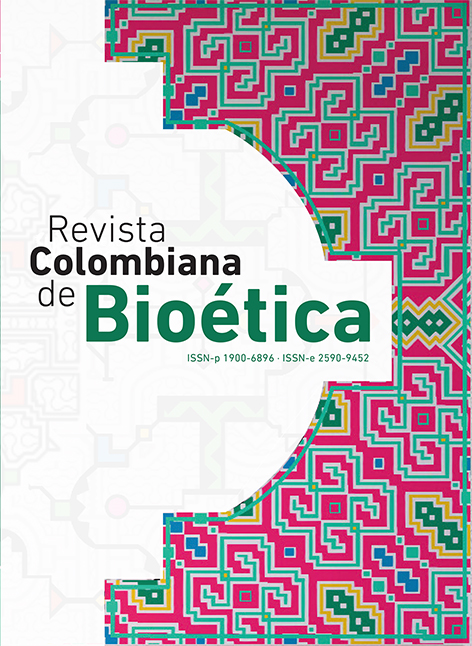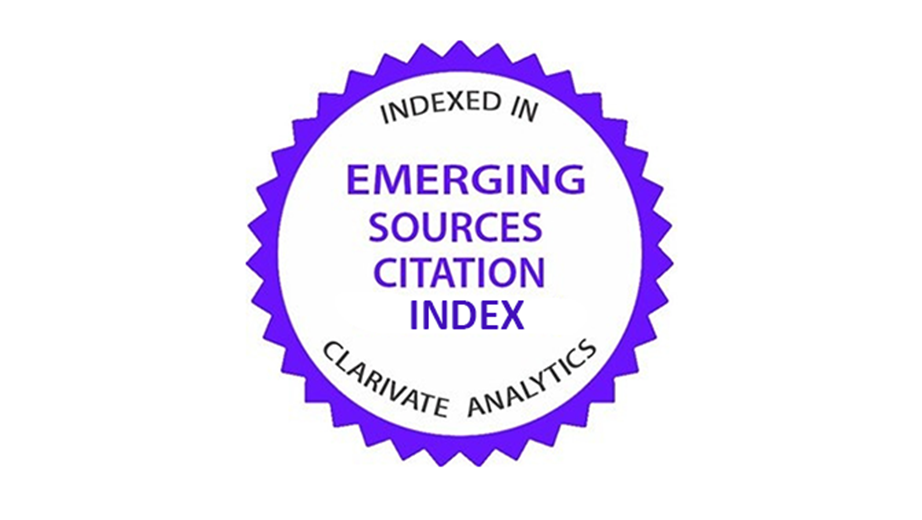Replacing ideas, reducing misconceptions and refining arguments: A reinterpretation of the 3Rs of animal experimentation
DOI:
https://doi.org/10.18270/rcb.v18i1.3875Keywords:
Bioethics, animal experimentation, animal ethics, replacement, 3RAbstract
Purpose/Background. In the present work, a reinterpretation of the 3Rs (3Rs) proposed by William Russell and Rex Burch (Replacement, Reduction and Refinement) will be carried out with the aim of broadening its scope and improving nonhuman animal experimentation practices.
Methodology/Approach. The meaning given by Russell and Burch to the 3Rs will be reviewed and the way in which each of them could be redefined or complemented in the light of current scientific practices, technical possibilities and bioethical knowledge related to the use of animals in research will be evaluated.
Results/Findings. The article will show that 1) not only animals should be replaced, but also the misconceptions we have, both about them and about the importance of bioethics education in scientific training, 2) that the reduction, in addition to the number of subjects used in each experiment, should serve to end unnecessary, repetitive and superfluous research, as well as some persistent misconceptions about the way science operates, and 3) that refinement should go beyond the experimental space to extend to the way we think about animal ethics in the research setting.
Discussion/Conclusions/Contributions. The paper reports on the importance of incorporating contemporary bioethical knowledge into animal experimentation practices to enhance the reflexive and ethical character of science.
Downloads
References
Archer, John.1979. “Suffer the children: The story of thalidomide.” JAMA 241, no. 20: 2208-2209. https://doi.org/10.1001/jama.1979.03290460068032
Balcombe, Jonathan. 2000. The Use of Animals in Higher Education. Problems, Alternatives and Recommendations. Washington D. C.: Humane Society Press.
Balcombe, Jonathan, Neal Barnard y Chad Sandusky. 2004. “Chad Sandusky Laboratory routines cause animal stress. Contemporary Topic American Association for Laboratory Animal Science.” Contemporary Topic American Association for Laboratory Animal Science 43, no. 6: 42-51.
Barbosa, Iván. 2011. Estadística aplicada a la experimentación animal. Bahía Blanca: Ediuns.
Baumans, V, P F Brain, H Brugere, P Clausing, T Jeneskog. y G Perretta. 1994. “Pain and distress in laboratory rodents and lagomorphs: Report of the Federation of European Laboratory Animal Science Associations (FELASA) Working Group on Pain and Distress accepted by the FELASA Board of Management November 1992.” Laboratory animals 28, no. 2: 97-112. https://doi.org/10.1258/002367794780745308
Beauchamp, Tom y James Childress. 1999. Principios de Ética Biomédica. Barcelona: Masson.
Bharadwaj, Kaushik, Tanmay Sarkar, Arabinda Ghosh, Debabrat Baishya, Bijuli Rabha, Manasa Panda, Bryan Nelson, et al. 2021. “Macrolactin A as a Novel Inhibitory Agent for SARS-CoV-2. Mpro: Bioinformatics Approach.” Applied Biochemistry and Biotechnology 193, no. 10: 3371-3394. https://doi.org/10.1007/s12010-021-03608-7
Cancino, Ángeles. 2016. “La enseñanza de la Bioética en Ciencia.” Revista digital universitaria 17, no. 2.
Deguchi, Sayaka, Ángel Serrano-Aroca, Murtaza Tambuwala, Bruce Uhal, Adam Brufsky y Kazuo Takayama. 2021. “SARS-CoV-2 research using human pluripotent stem cells and organoids.” Stem Cells Translational Medicine 10, no. 11: 1491-1499. https://doi.org/10.1002/sctm.21-0183
de Osorio, Afife Mrad. 2006. “Ética en la investigación con modelos animales experimentales. Alternativas y las 3 RS de Russell: Una responsabilidad y un compromiso ético que nos compete a todos.” Revista Colombiana de Bioética 1, no. 1: 163-183.
Evans, John Grimley y Peter Beck. 2002. “Informed consent in medical research.” Clinical Medicine 2, no. 3: 267-72. https://doi.org/10.7861/clinmedicine.2-3-267
Francione, Gary. 2000. Introducción a los derechos de los animales: ¿tu hijo o el perro? XXXX: Antartis.
Fraumeni, Paul. 2020. “How does covid 19 invade our bodies so easily? U of T Engineering team uses “organ on a chip” model to find out.” University Of Toronto Engineering News. https://news.engineering.utoronto.ca/how-does-covid-19-invade-our-bodies-so-easily-u-of-t-engineering-team-uses-organ-on-a-chip-model-to-find-out/?fbclid=IwAR0hhEi2mhL6fGvvCOPNgFh3KvMN5dSIYz0ZUaqup0HTFA0o4VzgUf_K2W8&eType=EmailBlastContent&eId=26b2063c-e3a0-43e7-8f9e-28dbe1cfabd1
Góngora Medina, Manuel. 2010. “Reconocimiento y manejo del distress, sufrimiento y dolor en animales de laboratorio: una revisión.” Suma psicológica 17, no. 2: 195-200.
Greek, Ray, Annalea Pippus y Lawrence A. Hansen. 2012. “The Nuremberg Code subverts human health and safety by requiring animal modeling.” BMC Medical Ethics 13, no. 1: 1-17. https://doi.org/10.1186/1472-6939-13-16
Johnson, Robin, Thomas Prentice, Patrick Bridegam, Colin Young, Andrew Steelman, Thomas Welsh y Mary Meagher. 2006. “Social stress alters the severity and onset of the chronic phase of Theiler’s virus infection.” Journal of Neuroimmunology 175, no. 1-2: 39-51. https://doi.org/10.1016/j.jneuroim.2006.02.014
Kirk, Robert. 2018. “Recovering The Principles of Humane Experimental Technique: The 3Rs and the Human Essence of Animal Research.” Science, Technology & Human Values 43, no. 4: 622-648. https://doi.org/10.1177/0162243917726579
Kitcher, Philip. 2011a. Science in a Democratic Society. Nueva York: Prometheus Book.
Kitcher, Philip. 2001b. El avance de la ciencia. México: UNAM.
Knight, Andrew. 2011. The Costs and Benefits of Animal Experiments. Oxford: Palgrave MacMillan.
Kotzwinkle, William. 2016. Doctor Rat. Barcelona: Navona.
Ley de Protección a los Animales de la Ciudad de México. 2021. Ley de Protección a los Animales de la Ciudad de México. Ciudad de México. https://paot.org.mx/centro/leyes/df/pdf/2021/LEY_PROTEC_ANIMALES_27_05_2021.pdf
López-Torres Hidalgo, Jesús. 2015. “Pagar por publicar en revistas científicas.” Revista Clínica de Medicina de Familia 8, no. 3: 179-181. https://doi.org/10.4321/S1699-695X2015000300001
Low, Philip, Jaak Panksepp , Diana Reiss, David Edelman, Bruno Van Swinderen y Christof Koch. 2012. “The Cambridge Declaration on Consciousness.” Francis Crick memorial conference, Cambridge.
Mallapaty, Smriti. 2021.”The mini lungs and other organoids helping to beat COVID.” Nature 593, no. 7860: 492-494. https://doi.org/10.1038/d41586-021-01395-z
Mather, Jennifer. 2001. “Animal suffering: An invertebrate perspective.” Journal of Applied Animal Welfare Science 4, no. 2: 151-156. https://doi.org/10.1207/S15327604JAWS0402_9
Mlinarić, Ana, Martina Horvat y Vesna Šupak Smolčić. 2017. “Dealing with the positive publication bias: Why you should really publish your negative results.” Biochemia Medica 27, no. 3: 447-452. https://doi.org/10.11613/BM.2017.030201
Mosterín, Jesús y Jorge Riechmann. 1995. Animales y ciudadanos. Madrid: Talasa.
Munck, Allan, Paul M. Guyre y Nikki J. Holbrook. 1984. “Physiological functions of glucocorticoids in stress and their relation to pharmacological actions.” Endocrine Reviews 5, no. 1: 25-44. https://doi.org/10.1210/edrv-5-1-25
Nussbaum, Martha. 2007. Las fronteras de la justicia. Consideraciones sobre la exclusión. Barcelona, Paidós.
Ortiz Millán, Gustavo. 2016. “Víctimas de la educación. La ética y el uso de animales en la educación superior.” Revista de Educación Superior 45, no. 177: 147-170. https://doi.org/10.1016/j.resu.2016.01.010
Polanche, Ana y Claudia Esposito. 2021. “Experimentación animal, una práctica extremadamente regulada e indispensable para el avance científico.” The Conversation. https://theconversation.com/experimentacion-animal-una-practica-extremadamente-regulada-e-indispensable-para-el-avance-cientifico-171266
Rosado, J. 1996. “La licitud ética de los experimentos en animales y la diferencia animal/hombre.” Cuadernos de Bioética 4: 443-453.
Russell, William y Rex Buch. 1959. The Principles of Humane Experimental Technique. London: Methuen & Co.
Shrader-Frechette, Kristine. 1985. Risk Analysis Method. Dordrecht: Reidel Publishing Company.
Singer, Peter. 2018. Liberación animal. Barcelona: Taurus.
Tannenbaum, Jerrold y B. Taylor Bennett. 2015. “Russell and Burch's 3Rs then and now: the need for clarity in definition and purpose.” Journal of the American Association for Laboratory Animal Science 54, no. 2: 120-132.
Taylor, Paul. 1981. “The ethics of respect for nature.” Environmental Ethics 3, no. 3: 197-218. https://doi.org/10.5840/enviroethics19813321
Téllez Ballesteros, Elizabeth Eugenia y Beatriz Vanda Cantón. 2021. “Las tres Ces como ampliación de las tres Erres para una praxis en la investigación biomédica.” Revista de Bioética y Derecho, no. 51: 123-139. https://doi.org/10.1344/rbd2021.51.32556
Téllez Ballesteros, Elizabeth, Aline Schunemann de Aluja, Beatriz Vanda Cantón y Jorge Linares Salgado. 2014. “Argumentos con los que se intenta legitimar la enseñanza lesiva con animales en medicina veterinaria y zootecnia.” Dilemata 15 (junio): 289-298.
Zapata, Miguel. 2016. “Convertir la zoé en bíos: Democracia, representación y animales.” Acta Sociológica, no. 71: 101-121. https://doi.org/10.1016/j.acso.2016.07.001
Downloads
Published
How to Cite
Issue
Section
License
Copyright (c) 2023 Revista Colombiana de Bioética

This work is licensed under a Creative Commons Attribution-NonCommercial-NoDerivatives 4.0 International License.

Esta obra está bajo licencia internacional Creative Commons Reconocimiento-NoComercial-SinObrasDerivadas 4.0.















